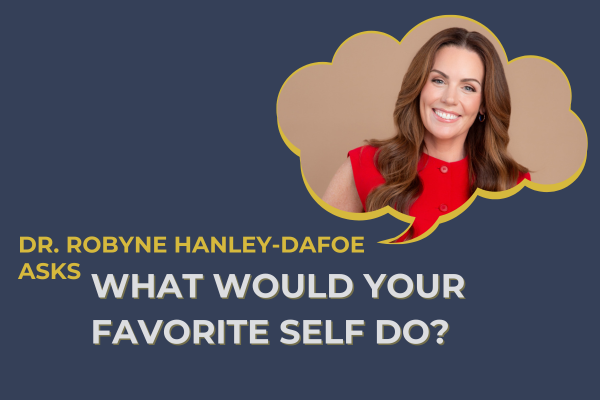Our featured blogs this month come from Dr. Robyne Hanley-Dafoe.
I recently looked at my screen time average, and it made me think, “Wow, what else could I be doing with that time?” Can you relate?
Even when we know our behaviors and habits don’t serve our greater purpose or well-being, we can still find ourselves engaging on autopilot and mindlessly scrolling. While we’re more connected than ever, many people are feeling disconnected from what matters most.
One of the biggest traps of mindless scrolling is how easily it leads us into comparison. Without realizing it, we start measuring our lives against what we see online.
Comparison Is the Thief of Joy
As we scroll on social media, we are presented with a highlight reel of people’s lives, showcasing their most exciting, successful, and visually appealing moments. This can create an unrealistic standard, making it seem like everyone else is leading more fulfilling lives. When we compare ourselves to others—especially these perfect-looking presentations found on social media—it’s easy to feel as if our own lives are lacking.
Not only does this constant comparison steal joy in the moment—it can have deeper effects on our mental and emotional well-being. Research suggests that problematic use of social media can lead to heightened anxiety, depression, irritability, and lowered satisfaction with one’s life.
The good news is that we don’t have to stay stuck in this cycle. We can begin to interrupt autopilot behaviors with a few intentional shifts and mindful actions.
Taking Back Control
We can take back control of our devices and social media usage by setting clear boundaries and making intentional choices about how and when we engage with them.
Here are some strategies I’ve been exploring—and I think something here might serve you well too:
Start with Intention
Each time you pick up your device, I invite you to ask yourself: Why am I picking up this device? Is it to connect with someone, download a podcast, listen to a song, or just pass the time? When you attach a clear intention to each interaction, you bring mindfulness into the behavior and reclaim control.
Get Curious about Your Patterns
Awareness is the first step toward change. Here are a few questions to help you reflect on your habits and their impact:
- How often am I checking my device/accounts? Why? What am I looking to achieve?
- What often triggers my habit? Is it a certain time, place, thought, or feeling?
- How much time am I spending on my device/social media each day?
- What emotion do I most commonly feel after I scroll?
- If I am on my device, what am I not paying attention to, or what could I be doing instead?
- How do the accounts I follow make me feel? Do they share positive content? Are they inspiring, motivating, and uplifting?
Set Digital Boundaries
Designating specific rooms as device-free or phone-free zones and certain times of the day as “social media-free” or “device-free” periods, such as during meals or the first hour after waking up, can be helpful. Challenge yourself to put your phone away for an hour and see how it feels! Or what if you experimented with a digital curfew, like putting your phone away after 8 pm? This can make a big difference for your mood and sleep. These small adjustments can make you think twice before reaching for your device, allowing you to be more deliberate about its use.
Replace Old Habits with New Ones
When we remove a behavior without replacing it, we often fall back into old patterns. If scrolling through social media is your way of unwinding at night, consider swapping it for a new habit that satisfies the same need. You could read, practice relaxation techniques, or spend time with loved ones instead. The more effortless and enjoyable the new habit feels, the more likely you are to stick with it.
By implementing these strategies and self-checks, you create space for the activities that leave you feeling more fulfilled.
Reconnecting with Your Favorite Self
Who are you when you are your favorite self? What are you doing when you’re your favorite version of you?
This version of you might feel joyful, light, or free—maybe you’re engaged in a sport or hobby, spending time with loved ones who make you laugh, or helping someone in need. You might not be surprised that mindlessly scrolling, posting on social media, or watching TikTok rarely make the list of what your favorite self enjoys most.
As you think about your relationship with your devices and social media, I invite you to consider this final question: What would your favorite self do instead of mindlessly scrolling?
Would they go play that game with family or friends? Listen to music? Read? Take a walk outside? Spend time with a loved one in person? Learn something new?
When you choose to be intentional and connect with real-life moments instead of distractions or comparisons, you make space for what matters most. Let your favorite self guide you as you take back your time, attention, and joy. You have the power to make choices that bring out your favorite version of you.

